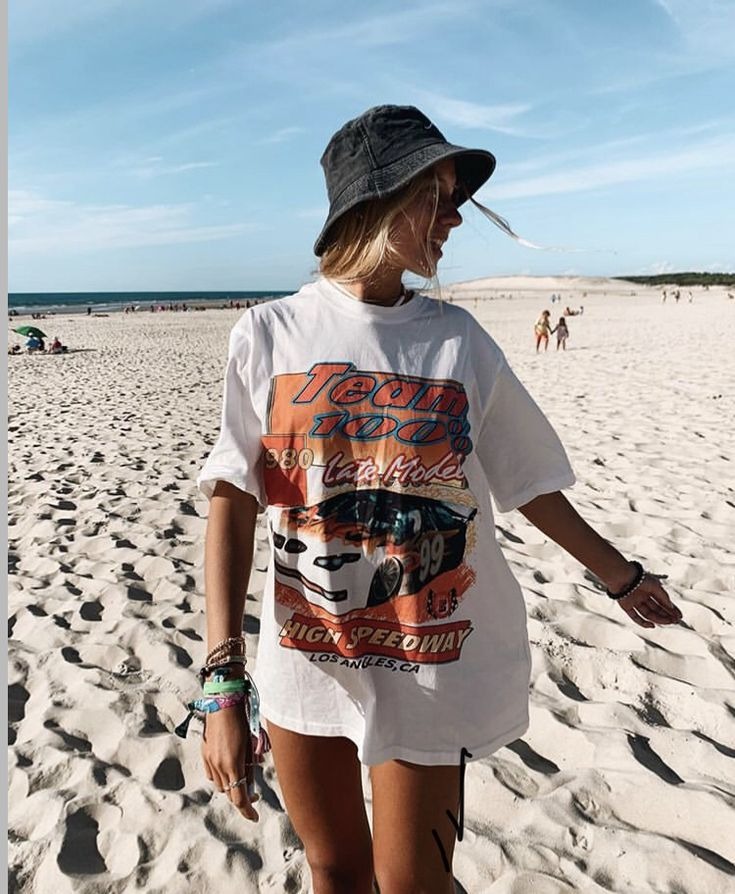Introduction
The t-shirt, at first glance, seems a garment of unassuming simplicity. Yet beneath its modest silhouette lies a tapestry of human ingenuity, cultural evolution, and technological advance. As a ubiquitous presence in wardrobes worldwide, the t-shirt bridges divides of geography, age, and social strata. Its unpretentious form has served as a blank slate for messages of protest and celebration, as both a mass-market staple and a coveted fashion collectible. In this sweeping analysis, we delve deeper than ever into the t-shirt’s origin story, trace its global adaptations, examine its economic and ethical dimensions, and peer ahead to the innovations that will carry this humble garment into an era of smart textiles and virtual avatars.
Early Origins and Industrial Foundations
The emergence of the t-shirt finds its roots in the rapid industrialization of Europe and North America during the late nineteenth century. Factory workers toiled in environments of extreme heat and physical strain, burdened by the starched collars, stiff cuffs, and heavy fabrics of traditional dress shirts. Tailors responded by eliminating collars and sewing sleeves and bodies from soft cotton jersey, creating the first pull-over undergarments. Though intended solely for functional use beneath outer layers, these early prototypes introduced the key elements that define the t-shirt today: a round neckline, short sleeves, minimal seaming, and breathable knit.
Concurrently, technological advances made these jerseys viable on a mass scale. Circular knitting machines spun cotton yarns into endless tubes of fabric, while mechanized looms increased output and lowered costs. By the turn of the twentieth century, the transition from bespoke tailoring to factory production had cemented the t-shirt’s foundational form. Yet in these early decades, it remained hidden—an underlayer rather than a standalone statement.
Wartime Adoption and Civilian Embrace
World War I wrought the first major shift in the t-shirt’s public visibility. Naval commanders stationed in hot, humid theaters issued short-sleeved undershirts to sailors as an antidote to searing sun and salt-stained wool uniforms. Soldiers on the front lines, pilots in open cockpits, and tank crews all came to rely on lightweight cotton jerseys for comfort and mobility. Following the armistice, veterans returning home incorporated these practical garments into civilian dress, inadvertently democratizing their use.
During World War II, rationing and military necessity further entrenched the t-shirt’s role. Governments in the United States, United Kingdom, and Commonwealth countries directed factories to produce vast quantities of cotton and cotton-blend undershirts for armed forces. Surplus stocks flooded postwar civilian markets at reduced prices. What was once an obscure undergarment became commonplace, worn by laborers, youth, and homemakers alike as a comfortable everyday shirt. By the 1950s, the t-shirt had shed almost all military connotations and was poised for cultural reinvention.
The Rise of Graphic Expression
The economic boom of the postwar era brought new possibilities. Blank white shirts became moving billboards for local businesses, sports teams, and political campaigns. Screen-printing shops proliferated, turning ordinary jerseys into canvases for slogans, logos, and images. In the 1960s and 1970s, the t-shirt morphed into a tool of protest and identity. Hand-printed messages like “Peace Now” or “Farm the Land” adorned campus rallies, music festivals, and street marches. Bands sold tour shirts bearing album artwork, establishing the paradigm of merchandise as both memorabilia and statement.
Artists and designers embraced new techniques—tie-dye achieved radiant gradients, linocut brought bold textures, and discharge inks allowed for intricate tonal effects. The t-shirt became a democratic art space: anyone with access to basic print equipment could craft a wearable poster. Through the ensuing decades, this interplay of commerce, activism, and artistry only deepened, with each movement imprinting its iconography onto the fabric of culture.
Global Resonance and Regional Reinvention
Though the t-shirt’s shape remains universal, its surface has absorbed countless regional reinterpretations. In West Africa, wax-print textiles find new life in panelled t-shirts that marry indigenous motifs with modern cuts. South Asia’s block-printing artisans layer vegetable dyes and hand-carved wooden blocks to produce shirts celebrating mythic narratives and folk patterns. Japanese designers take cues from Zen aesthetics and wabi-sabi imperfection, dyeing shirts in indigo, distressing edges by hand, and experimenting with asymmetry. In Scandinavia, minimalist ethos yields subdued palettes, high-quality organic linens, and an emphasis on texture and drape. Latin America’s vibrant street-art traditions appear in stenciled murals and bold typographic slogans, while Australia’s surf culture inundates boards and tees with wave imagery and coastal resilience. In each locale, the t-shirt not only adapts—it becomes a conduit for storytelling and identity rooted in place.
Technical Innovations: Fibers, Construction, and Printing
Behind the visual diversity lies a continuous undercurrent of technical progress. Early jerseys knit from coarse cotton have given way to luxurious long-staple fibers like supima, known for strength and softness. Blended constructions incorporate lyocell, bamboo viscose, and recycled polyester to balance moisture management with environmental responsibility. Seamless knitting technology crafts torsos from a single tube of yarn, minimizing waste and enhancing comfort. Advances in 3D body scanning and algorithmic pattern generation offer paths toward personalized fits, moving beyond the generic size range to bespoke measurements.
Digital printing has revolutionized the palette and precision of graphics. Water-based inks with low volatile organic compounds (VOCs) yield vivid, wash-fast prints without environmental sacrifice. High-definition direct-to-garment printers reproduce photographic detail, gradients, and subtle shading once impossible in screen-printing. Laser cutting and ultrasonic bonding techniques trim fabrics and fuse edges without thread, creating clean, fray-resistant finishes. Together, these developments signal an era in which both material and imagery emerge from seamless digital workflows.
Economic Scale, Supply Chains, and Market Dynamics
Annually, billions of t-shirts are produced, making the garment a cornerstone of the global apparel industry. Manufacturing hubs in Bangladesh, Vietnam, Turkey, and Central America process raw materials through spinning, knitting, dyeing, cutting, and sewing operations. Brands—from mass-market giants to niche direct-to-consumer startups—jockey for consumer attention through seasonal drops, influencer collaborations, and limited-edition capsule collections. E-commerce accelerates fulfillment expectations, while fast-fashion business models compress design-to-shelf cycles into mere weeks.
Yet this efficiency often obscures labor inequities and supply-chain risks. Factory workers may endure long hours for minimal wages, and raw-material sourcing remains opaque. Fluctuating cotton futures, trade tariffs, and pandemic-induced disruptions have prompted companies to diversify production closer to end markets. Near-shoring in Mexico and Eastern Europe offers shorter lead times, but may sacrifice labor cost advantages. Consumers now demand both speed and transparency, pressuring brands to reveal factory audits, fair-wage policies, and environmental metrics.
Ethical Imperatives and Environmental Responsibility
The t-shirt’s ubiquity magnifies its ecological footprint. Conventional cotton cultivation accounts for significant water usage and pesticide applications. Dyeing processes generate effluents that, if untreated, contaminate waterways and soil. Garment overproduction and fast-fashion paradigms lead to mountains of textile waste, with many shirts worn fewer than twenty times before disposal. In response, the industry is experimenting with regenerative agriculture—rotating cotton fields with cover crops to rebuild soil carbon—and closed-loop water systems that recycle dye-bath effluent.
Certifications such as Fair Trade and the Global Organic Textile Standard (GOTS) provide frameworks for ethical sourcing and processing, yet they cover only a portion of global output. Some brands embrace take-back programs to collect unwanted shirts for mechanical or chemical recycling, while platforms for resale and rental extend product lifespans. Innovations in biodegradable fibers—such as polylactic acid (PLA) derived from corn starch—promise reduced landfill persistence, though cost and performance challenges remain. Ultimately, achieving true circularity demands collaboration across farmers, manufacturers, retailers, and consumers to internalize environmental costs and incentivize mindful consumption.
Customization, Co-Creation, and Maker Cultures
At the grassroots level, the t-shirt continues to empower individuals as both designers and producers. Desktop direct-to-garment printers enable micro-enterprises to run zero-inventory businesses, printing on demand in response to real-time orders. Makerspaces and co-operative print shops offer access to traditional screen-printing, heat-press vinyl, and specialty inks. Online tools simulate virtual mockups, allowing customers to rotate, resize, and recolor graphics before placing orders. Community print runs for school fundraisers, charity walks, and local collectives reinforce the t-shirt’s status as a medium for communal storytelling. These bottom-up practices counterbalance mass-production, reaffirming the garment’s original spirit as a canvas for personal expression.
Psychological and Sociological Dimensions
Garments shape perceptions of self and others more than we realize. Psychologists note the “enclothed cognition” effect, whereby the attributes associated with one’s attire—professionalism, solidarity, rebellion—can influence mood, confidence, and behavior. A t-shirt emblazoned with a social-justice slogan can bolster feelings of empowerment, while matching team shirts foster group cohesion. Celebrity endorsements and influencer collaborations harness parasocial relationships, prompting fans to wear branded tees as badges of affiliation. In social movements, coordinated t-shirt colors and graphics generate powerful visual narratives that amplify collective voices. The t-shirt’s proximity to the skin lends it an intimacy that even high-fashion garments cannot replicate.
Digital and Virtual Realms: The Metaverse Wardrobe
As daily life intertwines with digital platforms, the t-shirt has leapt into virtual environments. Video-game characters don branded shirts, reflecting real-world logos or fantasy guild insignias. Fashion houses release NFTs (non-fungible tokens) tied to exclusive digital wearables, sometimes accompanied by a physical counterpart. Augmented reality filters allow shoppers to “try on” virtual tees, share images on social media, and purchase within the same interface. Virtual pop-up events in metaverse worlds host limited charity drops and avatar fashion shows. Scarcity models, familiar from streetwear hype cycles, translate into digital scarcity, with collectors vying for rare tokenized shirts. This blending of physical and virtual wardrobes opens new frontiers in expression, ownership, and community building.
Emerging Technologies: The Smart Shirt Horizon
The most transformative chapter may lie ahead, as sensors, conductive fibers, and responsive materials imbue the t-shirt with new capabilities. Smart textiles can incorporate biometric monitoring—tracking heart rate, body temperature, or muscle exertion—and transmit data to mobile devices. Photochromic inks alter their hue in response to UV light, while thermochromic pigments shift color with body heat, turning the wearer into a living canvas. Conductive yarns woven into the fabric could enable haptic feedback or serve as antennas for wireless charging. Biotechnology advances may yield lab-grown cellulose fibers that mimic cotton’s comfort without cropland use. Microfactories equipped with robotics and additive manufacturing could enable localized, on-demand production, dramatically reducing transport emissions and lead times.
Challenges and Pathways Forward
Despite these advancements, significant hurdles remain. Ensuring data privacy and security in smart garments will require new industry standards and regulatory frameworks. Scaling sustainable materials production without pricing out consumers demands continued R&D and strategic subsidies. Educating shoppers to prioritize durability, reparability, and circularity over fast-fashion novelty is an ongoing endeavor. Policymakers face the task of harmonizing chemical regulations, waste management mandates, and labor protections across borders. Brands, artisans, activists, and technologists must forge cross-sector collaborations to reimagine the t-shirt not as a disposable commodity but as a vehicle for ethical commerce, cultural dialogue, and environmental stewardship.
Conclusion
From its anonymous beginnings as a hidden underlayer to its status as the world’s most democratic garment, the t-shirt has borne witness to—and often driven—revolutions in society, technology, and self-expression. Its simple form has accommodated myriad reinventions: as protest banner, art piece, branding tool, and soon as a sensor-laden extension of our digital selves. In every fiber, print, and seam, the t-shirt tells a story of human creativity, resilience, and aspiration. As we embark on the next phase—one defined by sustainability imperatives, personalized fit, and digital convergence—the t-shirt will continue to serve as a living chronicle of our collective journey, an infinite canvas upon which we map the contours of identity, community, and progress




Leave a comment